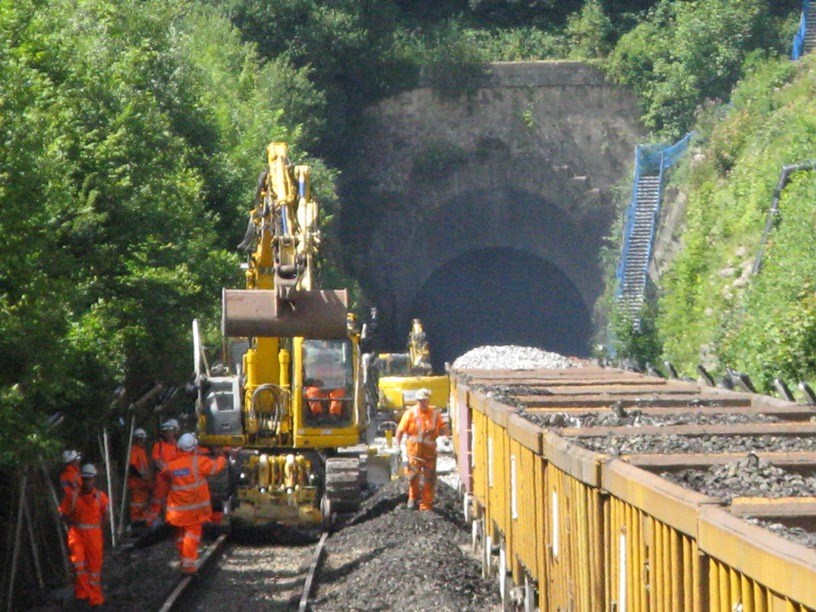Monday 3 Aug 2015
‘Orange army’ enters crucial second stage of electrification work through Bath
- Region & Route:
- | Wales & Western: Western
- | Wales & Western
Network Rail’s ‘orange army’ has entered a critical stage of its work to prepare Bath’s railway line for electrification, with work commencing to lower the tracks through Dundas Aqueduct, Bathampton Junction and Sydney Gardens.
Over the last week the team has successfully lowered the main line that runs towards London Paddington through Box Ashley and Middle Hill Tunnel, and is continuing to progress well with lowering the same line through Box Tunnel, having now reached the Corsham end.
All work is on schedule to complete by September 1, with the ‘orange army’ planning to revisit the above locations in a couple of weeks’ time to lower the main line that runs towards the South West.
Andy Haynes, Network Rail’s project director for the west of England, said: “I am pleased to say we continue to be on plan, with some aspects of the work completed ahead of schedule.
“We know this is no time for complacency though, particularly given the crucial stage we are at. Our work through the historic monument that is Dundas Aqueduct requires special measures, which is why we have worked closely with Bath and North East Somerset Council and Historic England to ensure we preserve its historic architecture.”
The second phase of Network Rail’s work requires the closure of the lines between Westbury and Bathampton Junction. This will affect services to Bath from Westbury, Freshford, Avoncliff and Chippenham, with journeys to London from Bath diverted via Bristol Temple Meads station. Passengers will still be able to reach Bath by train, but there will be timetable changes and in some cases replacement bus services in operation.
Andy continued: “I would like to thank passengers and those living close to Bath’s railway line for their continued patience and understanding.
“The completion of this track lowering work will mean the residents of Bath will be a step closer to experiencing the benefits of electrification and the new faster, longer, quieter and greener electric trains.”
ENDS
Notes to editors
Further travel information for during the Bath work can be found by visiting First Great Western’s website www.firstgreatwestern.co.uk. Alternatively, National Rail Enquiries also has up-to-date travel advice on their website www.nationalrail.co.uk.
Contact information
Passengers / community members
Network Rail national helpline
03457 11 41 41
Latest travel advice
Please visit National Rail Enquiries
Journalists
Victoria Bradley
Media relations manager (Western route)
Network Rail
01793 389749 / 07710 938470
victoria.bradley@networkrail.co.uk
About Network Rail
We own, operate and develop Britain's railway infrastructure; that's 20,000 miles of track, 30,000 bridges, tunnels and viaducts and the thousands of signals, level crossings and stations. We run 20 of the UK's largest stations while all the others, over 2,500, are run by the country's train operating companies.
Usually, there are almost five million journeys made in the UK and over 600 freight trains run on the network. People depend on Britain's railway for their daily commute, to visit friends and loved ones and to get them home safe every day. Our role is to deliver a safe and reliable railway, so we carefully manage and deliver thousands of projects every year that form part of the multi-billion pound Railway Upgrade Plan, to grow and expand the nation's railway network to respond to the tremendous growth and demand the railway has experienced - a doubling of passenger journeys over the past 20 years.
Follow us on Twitter: @networkrail
Visit our online newsroom: www.networkrailmediacentre.co.uk

